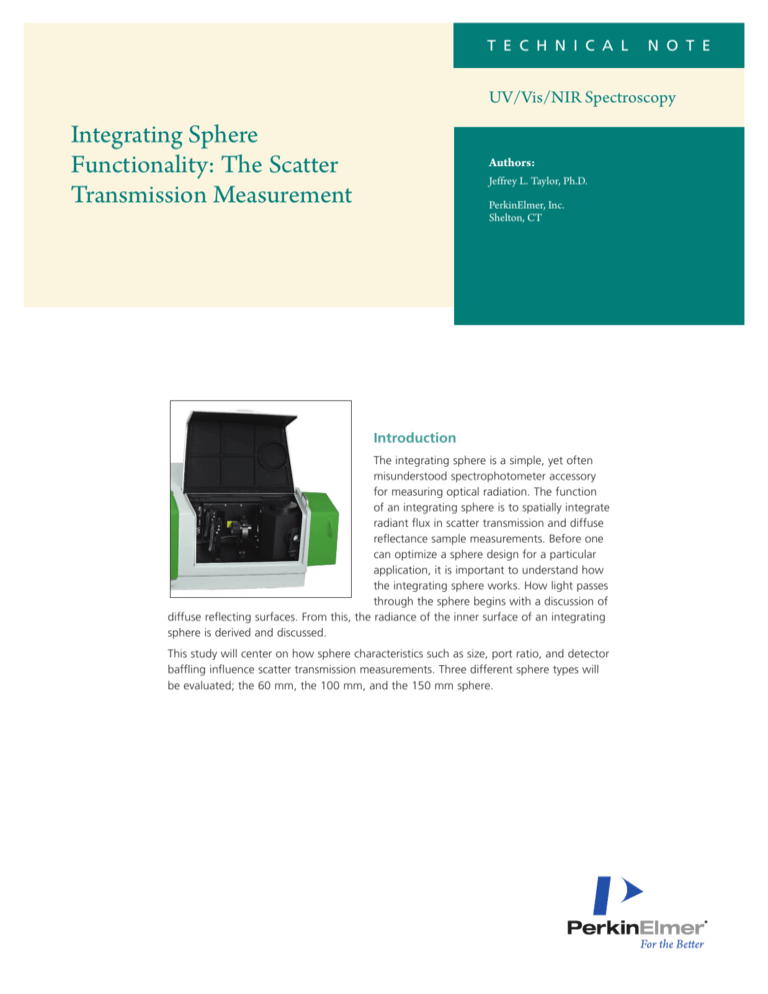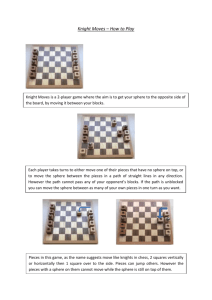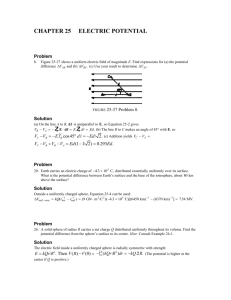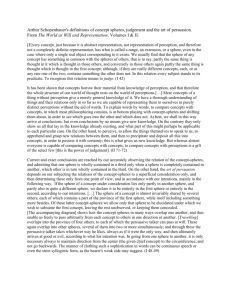
T E C H N I C A L
N O T E
UV/Vis/NIR Spectroscopy
Integrating Sphere
Functionality: The Scatter
Transmission Measurement
Authors:
Jeffrey L. Taylor, Ph.D.
PerkinElmer, Inc.
Shelton, CT
Introduction
The integrating sphere is a simple, yet often
misunderstood spectrophotometer accessory
for measuring optical radiation. The function
of an integrating sphere is to spatially integrate
radiant flux in scatter transmission and diffuse
reflectance sample measurements. Before one
can optimize a sphere design for a particular
application, it is important to understand how
the integrating sphere works. How light passes
through the sphere begins with a discussion of
diffuse reflecting surfaces. From this, the radiance of the inner surface of an integrating
sphere is derived and discussed.
This study will center on how sphere characteristics such as size, port ratio, and detector
baffling influence scatter transmission measurements. Three different sphere types will
be evaluated; the 60 mm, the 100 mm, and the 150 mm sphere.
Integrating Sphere Basics
Obviously, an integrating sphere’s design will affect its
measurement accuracy. The reflectivity of the surface of the
sphere as well as the size and location of ports, detectors, and
baffles will all influence how the light bounces around inside the
sphere. All of these parameters can influence the light integration
ability of a sphere. As will be discussed in this section, large 150 mm
diameter spheres have better light integration characteristics and
their measurements are less likely to be affected by sample
generated hot spots. The signal integration is not as good in
smaller spheres, and the large port fraction typically found in
smaller spheres can introduce significant errors in measurement
due to flux loss.
All of these factors must be considered when choosing an
integrating sphere accessory which is appropriate to the user’s
application. We will consider in this paper the singular
measurement mode of the scatter transmission from a sample.
Anatomy of a Scattering Sample
Figure 1 displays the general characteristics of a typical scattering
transmission sample. Integrating sphere scatter transmission
measurements are typically performed on samples that are hazy
or turbid. In essence these are samples that are not your typical
transparent liquid or solid. These types of samples tend to scatter
light away from the straight-line path from the sample to the
detector. Basically three events can happen when a
spectrophotometer’s collimated beam of light interacts with a
scattering sample in transmission mode. First, the light can be
absorbed due to the chemistry or physical nature of the sample.
This is depicted as the pink area within the sample in Figure 1.
Secondly, light can be transmitted through the sample in a rather
complex fashion. This scatter transmission is shown in blue and
Figure 2. A Typical Double Beam Integrating Sphere
consists of a 180 degree cone of forward scattered light that is
related to the diffuse characteristics of the sample. Third, light can
be diffusely reflected or backscattered in a 180 degree cone from
the front surface and interior of the sample. This is depicted in
red. While an integrating sphere is capable of measuring all of
these interactions, we will be concerned with only the scatter
transmission interaction in this investigation.
Note the standard components of sphere design seen in Figure 2.
An integrating sphere is a hollow ball of highly reflective material,
such as Spectralon®. In a double beam sphere there are two
entrance ports for the reference and sample beams. There are also
sample and reference ports that are covered by Spectralon®
plates for scatter transmission mode. Lastly, there are ports where
the photosensitive detectors are placed (designated D1 and D2).
In a double beam instrument only one beam (sample or reference)
is present in the sphere at any given time. The beams are
temporally sequenced by the instrument’s chopper at 50/60 hertz.
Figure 2 also shows a typical sample placed at the 0scatter
transmission port of an integrating sphere. If scattering samples
are measured in the standard instrument detector configuration,
the scattered light does not reach the detector and therefore
yields absorbance measurements much higher than the “real”
absorbance of the sample. However, when a sample is placed at
the scatter transmission port of an integrating sphere, this
scattered light is collected by the sphere and therefore gets
measured by the detector inside the sphere, yielding a
measurement of the transmitted and forward scattered light.
Figure 1. Scattering Sample
2
Sphere Radiant Flux and Spatial Integration Ability
The radiant energy flux of an integrating sphere is a measure of
the sphere’s ability to “integrate” light onto the detector through
multiple reflections within the sphere interior. The more reflections,
the more uniform that distribution becomes. Deriving the radiance
of an internally illuminated integrating sphere begins with an
expression of the radiance in Equation 1.
Equation 1:
Here Φ is radiant flux, P is the reflectance, A the illuminated area,
f the port fraction, and pi the total projected solid angle from the
surface. When more than two ports exist, f is calculated from the
sum of all port areas, including light entry ports and detector
ports. This equation is used to predict integrating sphere radiance
for a given input flux as a function of sphere diameter,
reflectance, and port fraction. Note that the radiance decreases as
sphere diameter increases. Equation 1 is purposely divided into
two parts. The first part is approximately equal to the flux of the
radiance on a diffuse surface. The second part of the equation is a
unitless quantity which can be referred to as the sphere multiplier.
It accounts for the increase in radiance due to multiple reflections.
A simplified intuitive approach to predicting a flux density inside
the integrating sphere might be to simply divide the input flux by
the total surface area of the sphere. However, the effect of the
sphere multiplier is that the radiance of an integrating sphere is at
least an order of magnitude greater than this simple intuitive
approach. A handy rule of thumb is that for most real integrating
spheres the sphere multiplier is in the range of 10 - 30 units with
0.94 < P < 0.99 and 0.02 < f < 0.05.
Sphere spacial integration can be visualized in Figure 3. On the left
is the interior of the sphere after the second sphere wall reflection.
We are now starting to see how an integrating sphere actually
does its job through the use of multiple internal reflections. On
the right is the average number of reflections off the surface of
the sphere before the light finally strikes the detector and is
measured. There are between 10 to 30 individual reflections.
Now, we’re not really interested in the math here, but rather in
the general concept of how the integrating sphere works by
propagating multiple reflections off the highly reflective interior
surface before the light finally strikes the detector. What is
important is that an integrating sphere functions by integrating
these multiple reflections onto the detector at the bottom of
the sphere. What we do not want to happen is for light to
undergo only a single reflection off the surface and then strike
the detector.
An exact analysis of the distribution of radiance inside an actual
integrating sphere would depend on the distribution of incident
flux, the geometrical details of the sphere design, and the
reflectance distribution function for the sphere coating as well as
each surface of each device mounted at a port opening or inside
the integrating sphere. Design guidelines for optimum spatial
performance are based on maximizing both the coating
reflectance and the sphere diameter with respect to the required
port openings and system devices. The effect of the reflectance
and port fraction on the spatial integration can be illustrated by
considering the number of reflections required to achieve the total
flux incident on the sphere surface. A greater number of
reflections produces radiance as both P increases and f decreases
Therefore, integrating sphere designs should attempt to optimize
both parameters for the best spatial integration of radiant flux.
Customers of spectrophotometer sphere reflectance accessories
generally have access only to generic sphere designs which cannot
be modified to fit individual needs. In this case, it is important to
understand the effects which the sphere’s diameter and port
fraction have on the sphere performance. The port fraction is
defined as the ratio of the total port area relative to the total
internal surface area of the sphere. All beam entrance ports,
sample ports, and detector ports which are filled with material of
lower reflectance than the Spectralon® sphere wall contribute to
the calculated port fraction. The port fraction is significantly lower
for 150 mm diameter spheres than it is for 60 mm spheres. For
example, the port fraction of a representative 150 mm double
beam integrating sphere accessory is 2.5 %, while a 60 mm
sphere for the same instrument has a port fraction of 11.3%. The
design of both accessories includes sample and reference beam
transmittance and reflectance ports, as well as PMT and PbS (or
InGaAs) detector ports. In order to adhere to many ASTM and CIE
methods for measurements using integrating spheres, the port
fraction of the sphere must be minimized. For instance, CIE
recommends that the sphere’s port fraction be lower than 10%
for color reflectance measurements, whereas ASTM D1003-95
requires the sphere to have a total port fraction less than 4% for
haze measurements on transparent plastics. Thus, 150 mm
diameter integrating spheres can be used for these methods. A 60
mm diameter integrating sphere with the standard transmittance,
reflectance, and detector ports is often unable to meet these strict
port fraction requirements. A low port fraction ensures good
integration of the sample signal before it reaches the sphere’s
detector. The influence of port fraction on sphere radiance is
discussed further in the next section.
Figure 3. Sphere Wall Reflections
3
Figure 4a. First Bounce Baffling
Measurement Accuracy
When designing integrating spheres, it is important that the
detector’s field of view does not include any portion of the sphere
surface directly irradiated by the sample beam or the first
reflection from the sphere surface, as seen in Figure 4a. Even
more important in scatter transmission measurements is the direct
illumination of the detector from sample transmitted light as seen
in Figure 4b. Both of these situations would introduce a false
response into the measurement.
A common way to prevent these artifacts is to introduce
detector shielding baffles. These are typically made from thick
pieces of Spectralon® or from metal which has been coated with
the same material as the integrating sphere wall. Baffles are
used to block the detector’s view of light which has not
undergone at least two reflections from the sphere surface.
Thus, the baffle is positioned to prevent the so-called ‘firststrike’
reflections from entering the field of view of the detector.
Baffles can be considered extensions of the sphere surface. Their
contribution to the sphere area can be factored into the radiance
equation although it is not usually significant. The fractional
contribution of baffles to the sphere surface area is usually quite
small. Scatter transmission measurements are particularly
sensitive to proper sphere baffling. This is because diffusely
scattered light directly from the sample, over a large detector
field of view, can easily enter the detector both from the first
interior sphere reflection and from the sample itself.
The size and position of baffles within the integrating sphere are
very important factors which influence the system’s
measurement accuracy. As described in ASTM E903, “large
errors can arise if the angular distribution of the light reflected
from the specimen is different from that reflected by the
standard.” An example is found in transmittance measurements
of translucent samples. The translucent sample, which scatters
light, is measured with respect to the non-scattering open port
(air), which is used for the background correction. Careful baffle
design can substantially reduce errors due to the different light
scattering distribution of samples and standards. However, baffle
design must always be performed with respect to the overall
radiance characteristics of the sphere. The balance between
baffle design and sphere flux is an important consideration when
choosing an integrating sphere design.
The distribution of light within an integrating sphere will drastically
affect its measurement accuracy. While small spheres do have
higher energy efficiency than their 150 mm diameter
counterparts, large integrating spheres will yield measurements
with greater accuracy since the light in large systems can be
‘integrated’ or distributed evenly about the sphere’s surface. The
large internal surface area and the small overall port fraction of
150 mm spheres allows the light to reflect properly around the
sphere, creating a homogeneous flux. However, in the design of
small integrating sphere accessories, sphere flux homogeneity
must often be compromised in an attempt to reduce the effects
of poor light integration.
Summary of Integrating Sphere Design Basics
1. As the reflectivity of the sphere interior surface material P
increases, artifacts due to poor spacial light integration
decrease. This is usually not an issue with spheres that utilize
highly reflective Spectralon® for their sphere surface.
2.As the sphere diameter increases, the energy flux on the
sphere detector decrease resulting in an increase in
instrumental noise.
3.As the sphere diameter increases, the number of light
reflections inside the sphere increases and artifacts due to poor
spacial light integration decrease.
4.As the port fraction of the sphere becomes larger, more light
can escape from the sphere before detector measurement
resulting in measurement artifacts.
5.Lack of sphere baffling can result in diffusely transmitted light
directly entering the detector and poor spacial light integration
resulting in measurement artifacts.
This five points demonstrate that integrating sphere design is a
series of trade-offs involving performance, price, and accuracy.
Perhaps the best way to regard scatter transmission data from
spectrophotometers fitted with integrating spheres is as an
asymptotically approached approximation that improves with
sphere diameter, coating reflectivity, and degree of internal baffling.
Figure 4b. Direct Strike Baffling
4
Figure 5. Film Test Samples
Experimental Data: Samples and Spheres
In order to better understand integrating sphere performance and
limitations in the real world, the following data was collected. A
set of three blue stage light films were selected as test samples.
These three films are shown in Figure 5. The specular film (left) is
a uniform transparent film that scatters little light; whereas, the
matte film (center) is semi-transparent with significant light
scattering characteristics. The opaque film (right) has similar light
scattering properties as the matte film, but has a greater native
absorbance. These three samples bracket the range of light
scattering and absorptive properties found in typical scatter
transmission samples frequently measured with an integrating
sphere equipped spectrophotometer. These three samples where
then measured in scatter transmission mode on three integrating
spheres of different design (sphere diameter). The
spectrophotometer used in this study was a Lambda 1050. All
three spheres employed Spectralon® as the reflective material, but
had diameters of 60 mm, 100 mm, and 150 mm. The relevant
port characteristics for the different spheres is compiled in Table 1.
Empirical visual inspection of the scatter transmission spectra
hints at a general trend for what is happening, but a more
quantitative metric for sphere comparison is needed. The
average percent transmission value for all wavelengths of the
spectrum fits this quantitative criteria by yielding a single numeric
value representative of the entire spectral transmission range.
These spectral means for the 60 mm and 100 mm spheres are
presented in Table 2 along with the differences from the color
standard 150 mm sphere. From our earlier discussion, artifacts in
sphere scatter transmission measurements are primarily generated
by large port fractions and lack of detector baffling. The amount
of scattered light produced by any given sample is significant in
relation to the size of the spectral artifact produce by a sphere’s
port fraction. The non-scattering specular film had only minor
variations between sphere types; whereas, the increasing
scattering characteristics of the matte and opaque films resulted
in an increasing variation related to sample scattering intensity.
This is easy to understand since the amount of scattered light that
deviating from the linear beam path is the radiation that fails to
be integrated (multiple reflections) from the sphere surface. The
opaque film sample had the highest percent variation due to its
low percent transmission values.
Table 1. Sphere Percent Port Fractions
Sphere Size
60 mm 100 mm 150 mm
Total Port/Detector Fraction
9.65
3.02
2.48
Port Only Fraction
5.17
2.11
1.80
Detector Only Fraction
4.03
0.87
0.66
Sphere Baffled
No
Yes
Yes
Figure 6a. Specular Film Scatter Transmission Spectra
In general, as the sphere diameter increases, the port fraction
becomes a smaller percentage of the surface area. Table 1 lists the
port fractions for the beam entrance ports, detector openings, and
total combined port fraction separately for comparison. The
entrance ports account for a significantly larger port fraction than
the detector openings. The baffling of the 100 mm and 150 mm
spheres in conjunction with their small total port fraction (under
4%), makes these integrating spheres compliant for ASTM color
analysis measurements. The lack of baffling and much larger port
fraction of the 60 mm sphere hints at potential difficulties in
scatter transmission measurements.
Scatter transmission spectra for the film samples as a function of
sphere size are displayed in Figures 6a, 6b, and 6c. In general,
percent transmission values are highest for the specular film,
followed closely by the matte film. As expected, the opaque film
had a much lower transmission values. The specular and opaque
film spectra contain the least variation between the different
sphere sizes; whereas, the matte film has the greatest variation.
Figure 6b. Specular Film Scatter Transmission Spectra
5
A natural question to ask at this point is, "Does the port fraction
correlate to the mean percent transmission value?" Figure 7
graphs this relationship and states linear correlation values for
the three sample types. While all three samples displayed an
increasing mean trans- mission trend, only the specular sample
showed highly correlated values.
Any scatter transmission measurement obtained on an integrating
sphere is an approximation and should never be considered an
absolute measurement. All spheres must have entrance ports and
detectors; therefore, a sphere port fraction of zero is impossible.
A well de- signed integrating sphere will reduce the port fraction
down to an acceptable value of less than 4%, but port fractions
less than 2% are rare. Both the PerkinElmer 100 mm and
150 mm integrating spheres are compliant with this criteria
and generate acceptable data. Small unbaffled spheres like the
60 mm sphere are a low cost alternative for diffuse reflectance
measurements, but care should be exercised in understanding
their limitations for particular scatter transmission applications.
Figure 6c. Specular Film Scatter Transmission Spectra
Figure 7. Port Fraction versus Mean Scatter Transmission Values
The spectral artifact due to high port fraction and lack of
baffling results in a higher than expected percent transmission
measurement. One very common sphere scatter transmission
measurement is the UV transmission of pharmaceutical vials and
bottles. Here a inaccurate high transmission value can cause a false
negative type error and the rejection of good product. The common
industry trend is to use inexpensive, small, unbaffled spheres for this
type of quality control application. This can result in a multiplicity of
values for the same product measured on different sphere designs.
A possible solution to this hardware problem is to perform “roundrob- in” calibration studies on a selected “representative” samples.
Since, as we have seen in this paper, these artifacts relate to the
scattering properties of the sample; therefore these calibration can
become exhaustive and detailed.
For scatter transmission measurements, the integrating sphere
should be selected to match the application.
Table 2. Mean Scatter Transmission Values
Average %T (300 nm - 850 nm)60 mm - 150 mm Difference
60 nm
100 mm
150 mm
60 mm
100 mm
150 mm
60 mm
Blue Opaque Film
150 mm
7.53
6.66
6.11
1.420.550.0018.888.26 0.00
Blue Matte Film
63.79
60.84
58.23
5.552.620.008.714.300.00
Blue Specular Film
70.149
69.17
69.13
1.060.040.001.510.060.00
PerkinElmer, Inc.
940 Winter Street
Waltham, MA 02451 USA
P: (800) 762-4000 or
(+1) 203-925-4602
www.perkinelmer.com
For a complete listing of our global offices, visit www.perkinelmer.com/ContactUs
Copyright ©2013, PerkinElmer, Inc. All rights reserved. PerkinElmer® is a registered trademark of PerkinElmer, Inc. All other trademarks are the property of their respective owners.
011486_01
% Difference
100 mm









